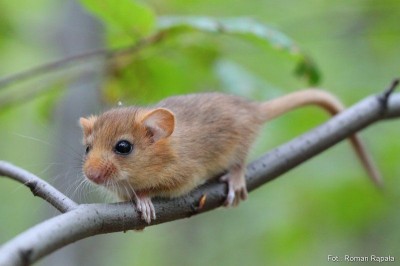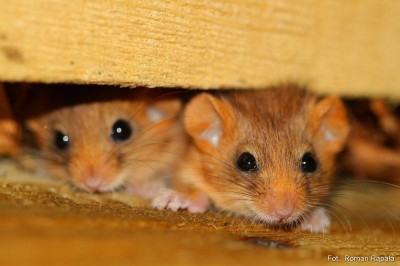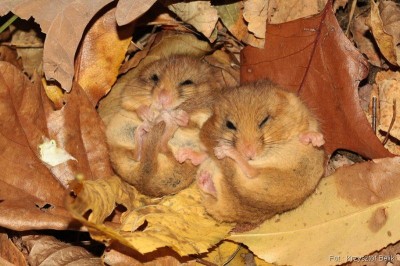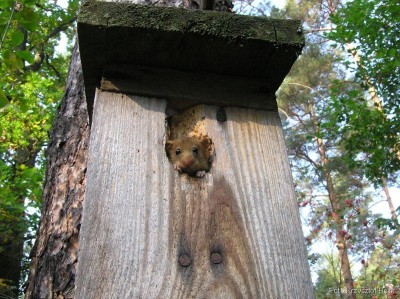Hazel dormmouse
Hazel dormmouse -Muscardinus avellanarius
Size of a home mouse, this tiny rodent belongs to the Gliridae family. In our country is a species under strict protection – requiring active protection program as well. It is extremely difficult to meet the hazel dormmuse in its natural habitat, - not only is it a nocturnal animal, but also very reluctatnt to descend to the ground floor. It remains active during vegetation season and falls into a winter dream from October to April. Its nests are usually built at low altitudes among branches and bushes, still it is also known of residing in (artificial) bird or bat houses. Dormmous grows to 12-16 cm, almost half of which is a long tail which, when climbing trees and bushes, balances, supports and holds the mammal. Adults weigh about 20g (ie as much as 4 1 zloty coins). The diet consists mainly of seeds and fruits of trees and shrubs. The species is not strictly vegetarian though - the supplement to the diet may be small animals, such as insects and its larvae. Until very recently, we did not know much about those kind looking rodents in the Karkonosze National Park. The former sources of information spoke of individual species found in the vicinity of Karpacz, and its observation in Jagniątków. The literature of the 1980s, claims that "there is a richness of the dormouse in the Polish Giant Mountains, especially over the upper forest border." Thanks to actions co-financed by the EU, as part of the project: "Comprehensive protection of forest ecosystems in the Karkonose National Park" we are richer today with new knowledge of this species. We know that it is an animal willingly inhabiting Karkonosze habitats - mainly in the floor of the foothills and lower mountain zone. We know that they prefer mixed forests rather than of monoculture, necessarily with dense undergrowth of bushy shrubs. Such habitat guarantees the adequate shelter (eg. against birds of prey) and a solid food base. The most interesting for us is the dormouse occurrence in the former, artificial spruce monocultures, which we have already reconstructed with other native kinds of trees, trying to restore the natural character of the forest ecosystems of otherwise anthropogenic origin. Having planted hundreds of hectares with new trees, we already know how crucial and of great importance is the mission of restoring primal, natural habitats, to which – former residents of those mountains – seem to be coming back more and more! This is an ideal example showing that restoring appropriate forest ecosystems does not only alter the species composition of the stands but significantly increases the biodiversity of the plant and animal world.






 Public Information Bulletin
Public Information Bulletin





